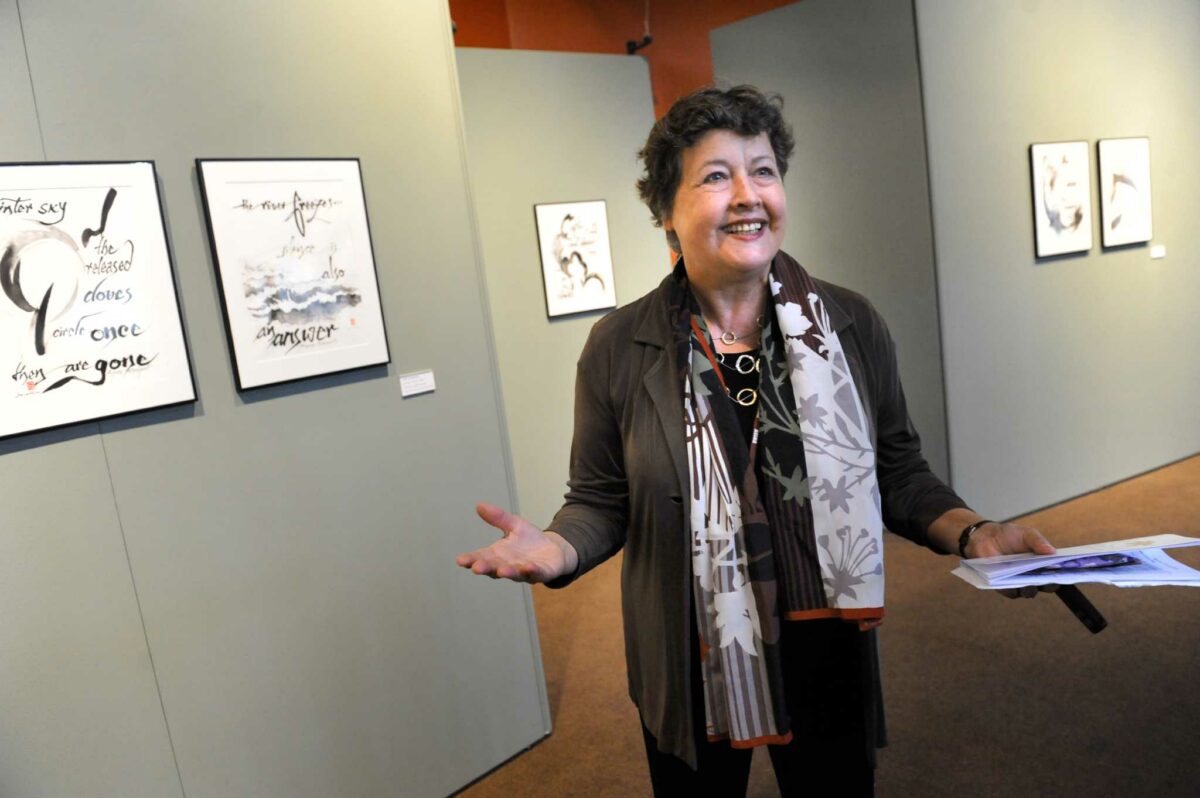
SCHUYLERVILLE — Hilary Tann, a Welsh-born composer known for the lyricism and spirituality of her music and for her devotion to students over four decades of teaching at Union College in Schenectady, died suddenly Wednesday at home, according to her husband, David Bullard. She was believed to be 74 or 75. A cause of death was not immediately available.
“It’s a terrible loss for our Capital Region music community,” said David Alan Miller, artistic director of the Albany Symphony Orchestra.
A prolific composer whose work is represented on more than 60 CDs, including three solo discs of vocal, chamber and orchestral music, Tann wrote music that was performed worldwide, from Bangkok and Beijing to Cardiff in her native Wales and across the United States as well as locally. She was commissioned by festivals, ensembles and artists as varied as the North American Welsh Choir, the Royal Liverpool Philharmonic Orchestra, North Carolina Symphony, Empire State Youth Orchestra and pianist Max Lifchitz, a University at Albany professor and fellow composer.
“Her music has such honesty and passion to it, just like Hilary as a person,” said Ann-Marie Barker Schwartz, a local violinist who knew and worked with Tann for more than 30 years. Schwartz played Tann’s compositions in the former St. Cecilia Orchestra, which Schwartz co-founded in the early 1990s, and several times with her current ensemble, the Musicians of Ma’alwyck, of which Schwartz is the director.
For more than 15 years the Musicians of Ma’alwyck collaborated with students in Tann’s composing class at Union, with the ensemble rehearsing the students’ pieces and then playing them for a live recording before an audience.
“It was very special to see their delight at hearing their pieces played live instead of on a synthesizer,” said Schwartz. “Hilary always made them all feel like they had valid musical ideas and a musical voice. That was a a real gift.”
Reviewing a 2020 recording by the Sirius Quartet of Tann’s 2014 quartet “And the Snow Did Lie,” Times Union classical critic Joseph Dalton wrote, “Tann’s music is shimmering and weightless, effective and moving.” He continued, “The central portions of the piece are rich with tunes that spill out in a flow more generous than deliberate, still sweet and rapturous … (reinforcing) the grounded spiritual ecstasy that is Tann’s distinctive musical outlook.”
Tann’s most frequent source of inspiration was nature and its scenery. “I can’t write if I don’t have the image. That’s the seed,” she told the Times Union in 2005. Her large catalog of works includes orchestra pieces with titles such as “Adirondack Light,” “The Open Field” and “Through the Echoing Timber.”
A 2005 piece titled “From the Feather to the Mountain,” commissioned and premiered by ESYO, was inspired by pen-and-ink drawings by the late local artist Arnold Bittleman; that same year, Lifchitz premiered her piano work “Light from the Cliffs.” Reviewing a 2010 concert in Manhattan by the Lifchitz-led North/South Chamber Orchestra that featured Tann’s “The Walls of Morlais Castle,” Steve Smith of The New York Times called it “a handsome piece for string orchestra, with dusky melodies and bracing, rustic rhythms.”
Born in a coal-mining village in South Wales after the end of World War II, Tann received her undergraduate degree in musical composition from the University of Wales at Cardiff and went on to earn master’s and doctoral degrees at Princeton University. She started at Union College in 1980, bringing a compositional bent to a department she would later chair for 15 years. She retired in 2019, retaining the title of an endowed chair, the John Howard Payne Professor of Music Emerita.
The college credits Tann with being an important part of the creation of its Taylor Music Center, a 14,000-square-foot project that included a 120-seat recital hall, Emerson Auditorium. It opened in 2006.
In addition to nature, Tann was inspired by Japanese culture and the traditional music of Japan, leading her to taking seven years of lessons on the shakuhachi, an ancient Japanese vertical bamboo flute. She traveled to Japan to study with a shakuhachi master.
“She knows more about it than most Japanese, and that’s no hyperbole,” Bullard, also a longtime student of Japanese language and culture, told the Times Union in 2005. A professional organist, Bullard married Tann in 2002. She, after many years of living solo in the Adirondacks, moved to the Marshall House, a Schuylerville home of historic significance that dates to the Revolutionary War and has been in the Bullard family for about a century.
Tann was also an aficionado and practitioner of haiku. She was for many years a member of a Saratoga County haiku group, whose monthly meetings lasted five or six hours, with members reading aloud a dozen or more new haiku that were then discussed. She coordinated Union’s 2015 hosting of the Haiku North America, the largest and oldest gathering of haiku poets. More than 100 people attended from around the world.
“Haiku keeps me in the moment,” Tann told the Times Union in 2005. “With composing, one is always projecting ahead. (Haiku) pulls me back to the ‘A-ha!’ of the day.”
Funeral arrangements were unclear Thursday. Schwartz said she hopes to include a Tann composition in the Musicians of Ma’alwyck’s concert in June. A scholarship named after Tann and her predecessor as Union’s music department chair, called the Hugh Allen Wilson & Hilary Tann Annual Music Fund, was established by a 1990 Union graduate. It provides four to five students per year with scholarships to cover instrumental or voice lessons.